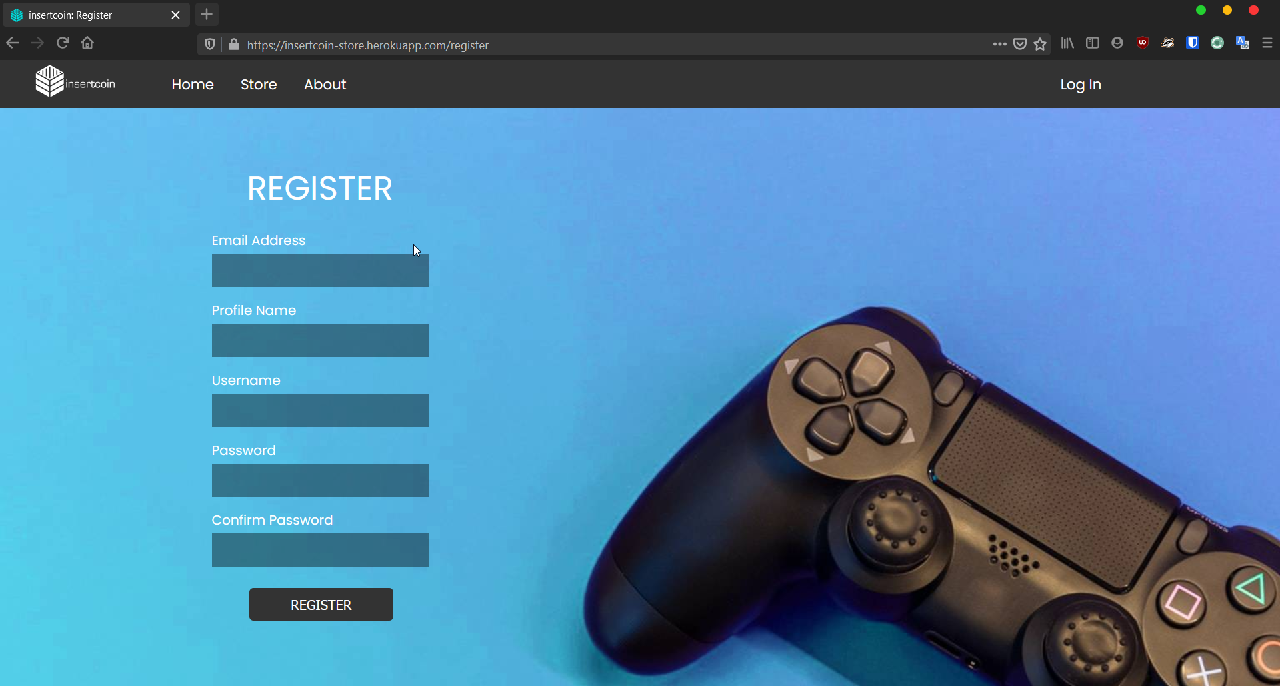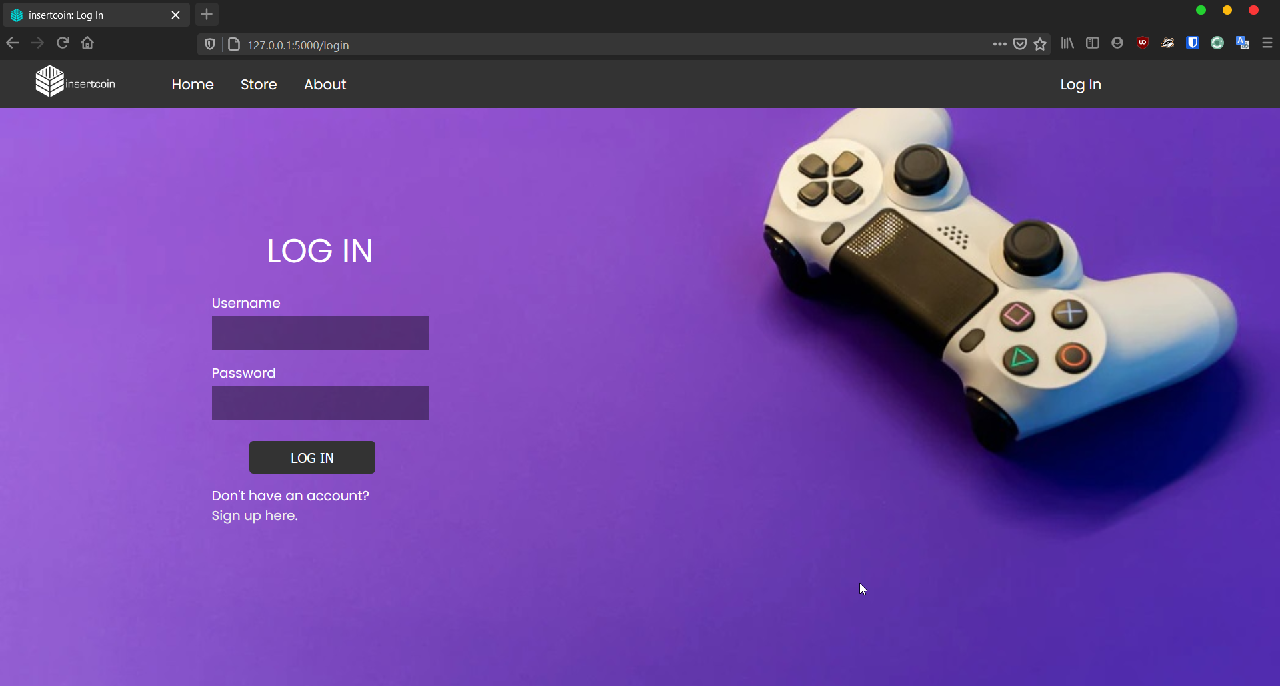Website Login system using Flask and Python
insertcoin-store
I and a classmate had made a mini-project for college that implemented Database concepts using MongoDB. I took it as a oppurtunity to skill myself in Web Development.
The Project
The project was titled “Insertcoin: Game Marketplace”. We took the topic of a game markteplace as it involves all of the basic CRUD operations that were required in the mini-project.
The base layout of the website was made keeping Steam in mind.
The Webpages
I first made a basic home.html page that had the basic layout of all pages of the site. All other webpages would be able to inherit from that layout by using extends like so:
library.html
{% extends "layout.html" %}
<!-- **Page content** -->
{% block title %}
<title>insertcoin: Library</title>
{% endblock %}
{% block content %}
<span class="pageheading">Library</span>
{% endblock %}
The website’s home, login and register pages inherit from home.html.
Connecting to MongoDB
I signed up to MongoDB to use the free version of their Atlas service. This database would be used to store the login information of the users.
After creating a database, I was able to acquire the connection string required to connect to the it. We can then connect using PyMongo like so:
CONNECTION_STRING = os.environ.get("MONGO_KEY")
client = pymongo.MongoClient(CONNECTION_STRING)
Now any connected database would be accessible by client['<db_name>']!
Registering to the website
Register.html

After the user submits the data required to register without any errors, their data gets added into a document in the Atlas database.
The register() function below checks if-
- The entered passwords match
- There is no existing user with the same username (using MongoDB’s
find_one()function)
and then pushes the data to the MongoDB document if both the coniditons are satisfied.
Passwords passed to the Database are hashed using the Python module Bcrypt.
@app.route('/register', methods=['POST', 'GET'])
def register():
if request.method == 'POST':
# If the passwords match
if request.form['pass'] == request.form['passconfirm']:
users = db['UserInfo']
existing_user = users.find_one(
{'username': request.form['username']})
# If there is no existing user with the same username
if existing_user is None:
hashpass = bcrypt.generate_password_hash(
request.form['pass'].encode('utf-8'))
users.insert({
'email': request.form['email'],
'profilename': request.form['profilename'],
'username': request.form['username'],
'password': hashpass,
'games': [],
'balance': 5000
})
# session['username'] = request.form['username']
return render_template(
'login.html',
account="Log In",
comment='Your account was added successfully!')
else:
error = "The username that you entered already exists."
return render_template('register.html',
account="Log In",
error=error)
else:
error = "The passwords you entered do not match."
return render_template('register.html',
account="Log In",
error=error)
else:
return render_template('register.html',
account="Log In",
acclink=loginlink)
Logging in
login.html

When the user submits the data, the function find_one() is used again to find out if the user exists in the database.
If yes, the user’s password is compared to the password (again using Bcrypt) entered and if that matches too, the user is redirected to the Library page.
Using the session module, we can add an object session['username'] with the user’s username. This can be used later to check if there is a user currently logged in.
The login() function is as follows:
@app.route('/login', methods=['POST', 'GET'])
def login():
if request.method == 'POST':
users = db['UserInfo']
login_user = users.find_one({'username': request.form['username']})
# if the user exists in the database
if login_user:
if bcrypt.check_password_hash(
login_user['password'],
request.form.get('pass', False).encode('utf-8')):
session['username'] = request.form['username']
return redirect(url_for('index'))
else:
error = "The username or password that you have entered is incorrect."
return render_template('login.html',
account="Log In",
error=error)
else:
error = "The username or password that you have entered is incorrect."
return render_template('login.html',
account="Log In",
error=error)
else:
return render_template('login.html', account="Log In")
Logging out
Logging out is a easy process. We clear the session dictionary object with the key 'username' using the function session.pop(), and then redirect the user back to the homepage.
@app.route('/logout')
def logout():
session.pop('username', None)
return redirect(url_for('index'))
The above code together forms a complete login system to log in to the website!
Check out the website here!
You can view the rest of the code in my Github repository, insertcoin.
